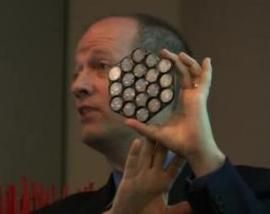World's first 3D camera chip
Could it open up a new area of photography?

Scientists at Stanford University in the US have produced the world’s first camera chip that can record images in 3D, according to a report on Wired.
Unlike a normal camera sensor, the 3D chip uses overlapping 16 x 16 arrays of pixels, each of which covers a slightly different angle.
In much the same way that humans use the different information captured by two eyes to comprehend the depth and spatial relationships of what they see in front of them, so the pixels in the Stanford camera chip are able to piece together a 3D image of what’s in front of them.
Not the first 3D camera
Although the Stanford researcher’s chip is the world’s first 3D chip to be designed for a camera it’s not quite the first attempt at producing a 3D camera. Adobe has tried a similar trick, albeit by different means, by binding dozens of lenses together in a fly’s eye configuration. There’s no doubt that the Stanford chip would be infinitely more practical though.
Of course, a 3D camera is of very limited benefit to general consumers because it isn’t possible to view a 3D image on a dual-plane screen or print axis without wearing special glasses.
However, in the world of professional digital editing, the ability to have a fully mapped 3D image could prove especially useful. Particularly the ability to apply selective effects to any part of the image by depth.
Get daily insight, inspiration and deals in your inbox
Get the hottest deals available in your inbox plus news, reviews, opinion, analysis and more from the TechRadar team.
Most Popular

